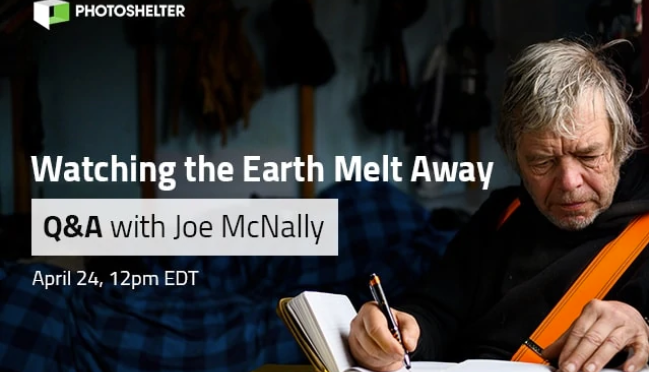In honor of Earth Day 2020, Joe McNally and Photoshelter will be holding a webinar where Joe will discuss his 2001 and 2019 visits to Cooper Island, the photos and video he obtained during those visits and the importance of conservation photography in engaging and educating the public. We had planned to have Joe attend our annual Seattle update at Town Hall Seattle, which had to be cancelled due to the need for social distancing and are glad he is able to discuss his Cooper Island work in this webinar. You can register for the webinar at this link or...
![jm-gjd-nyt-1 [POSTPONED] Annual Seattle Update – Tuesday March 17th](https://cooperisland.org/wp-content/uploads/2019/12/jm-gjd-nyt-1-672x372.jpg)
[POSTPONED] Annual Seattle Update – Tuesday March 17th
Watching the Arctic Melt Away We regretfully have to postpone our annual Seattle update due to increasing concerns about the COVID-19 coronavirus and our patrons’ health, including the recent decision by Town Hall Seattle to suspend in-person attendance for all events. Reporting to our followers at our Seattle annual event is a yearly highlight for George. This is also Friends of Cooper Island’s main fundraising event for the year, with paying for the venue a major expenditure. We are postponing (rather than cancelling) in part to save some of our Town Hall rental, as well as to be able to...
Talking climate change at CES in Las Vegas
My three months on Cooper Island every summer for the past 45 years is characterized by long periods (up to 6 weeks) of being alone and with little dependence on the technological gadgets and infrastructure that dominate the lives of those living on the grid in the early 21st Century. The isolation and simplicity of my field camp are welcome perks of my study of an Arctic bird. My experience this past week could not have been any more dissimilar to my field seasons as I attended the Consumer Electronics Show (CES) in Las Vegas. As if Vegas itself...
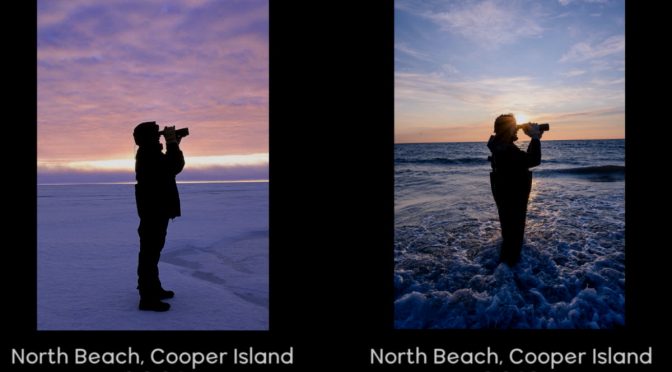
An old friend returns for a new picture
This past summer the Cooper Island field camp was thankful to have a return visit from photographer Joe McNally. Joe has been taking photos longer than I have been studying Cooper Island Black Guillemots and his website shows both the quality and scope of his work. His visit in 2001 took place before we had a cabin and was for the purpose of obtaining photos for a New York Times Magazine story being written by Darcy Frey, who had visited the island earlier that year. Joe and I had a great time during his week on the island and have...
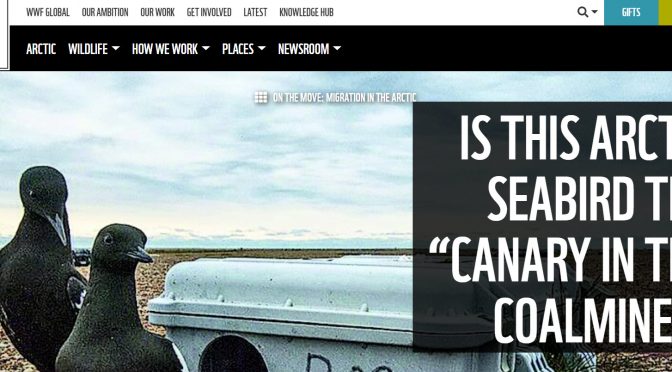
World Wildlife Fund features Cooper Island research in Arctic Magazine
The 2019 winter edition of the World Wildlife Fund’s Arctic magazine, The Circle, features findings from the Cooper Island Black Guillemot study. The entire issue is well worth reading with articles on how the warming Arctic is affecting indigenous people, birds and mammals, and tundra vegetation. The WWF website has additional text and links not available in the PDF of the magazine with the Cooper Island coverage available here.
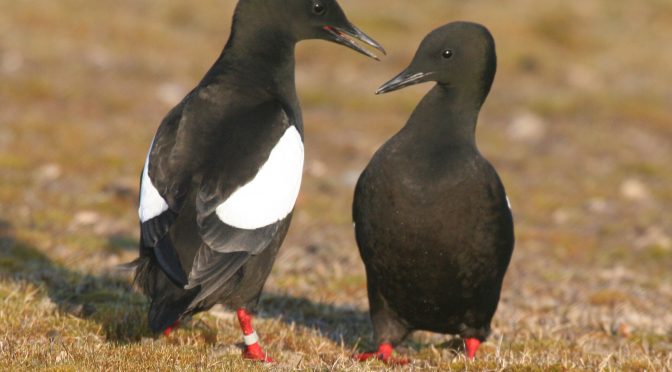
A Visit From a French Demographer
Thanks to our participation in the international Sentinels of Sea Ice (SENSEI) project, this summer the Cooper Island field camp was visited by Pierre-Loup Jan, the post-doc analyzing the Cooper Island demographic data set. After 44 years of sharing the island with a seabird with a French name (“guillemot” is the diminutive of Guillaume – the French version of “William) it was fitting to have a French researcher on the island with me. We are very fortunate to have Pierre-Loup and his colleagues in France collaborating with us. He was a welcome addition to the 2019 field camp as he...
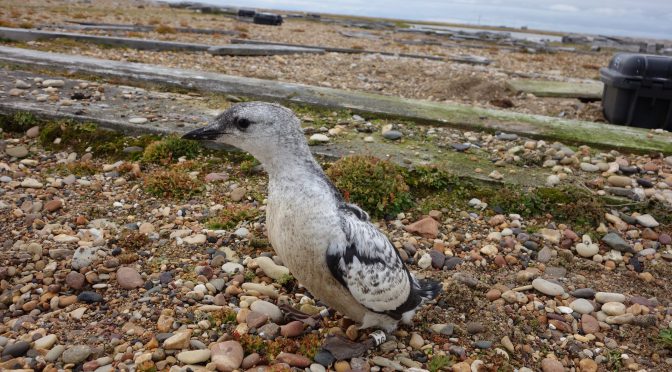
The Darkness of August
by George Divoky While much has changed over the course of the 45 summers I have spent on Cooper Island, as warming from anthropogenic carbon emissions has modified the Arctic’s snow and ice habitats, one thing has remained constant. The sun is always above the horizon for 24 hours when I arrive in early June and it does not set until precisely August 2. The importance and impact of that constant daylight is hard to overstate. When I arrive on the island I am not constrained by the day-night/light-dark cycle that I just left in Seattle, and I can work on whatever...
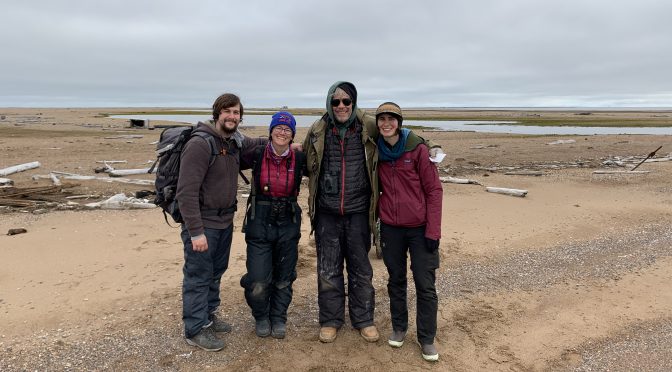
Loss of Sea Ice Takes Its Toll on Seabirds
By George Divoky The positive signs of colony size and breeding effort of the Black Guillemots on Cooper Island in June were too good to last. After very high hatching success, the decreased ice and increased water temperatures took their toll as parents were unable to find prey in the warm, ice-free waters. Rapidly shifting ocean temperatures provided some days of good growth, but currently only one third of chicks are still alive. As the mortality was unfolding, we shared it with a reporter from the Washington Post for an article describing the impacts of climate change in Alaska in...
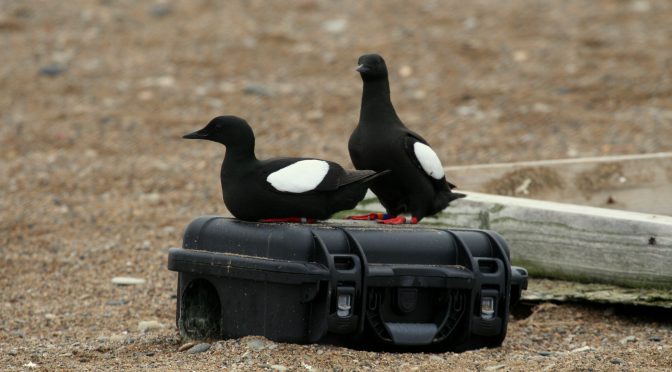
Birds on Nests During Incubation
By George Divoky The Black Guillemots on Cooper Island continued to show signs of a turnaround from the poor breeding season of 2018 as egg laying and incubations has occurred in over 75 nests this year, compared to only 25 last year. The breeding population saw the recruitment of 20 birds that had fledged from the island in past years but had yet to breed. This is important since it shows that even with the decreased reproductive success and poor ice conditions of recent years, some birds are surviving to breeding age (typically 3-years of age) and returning to their natal colony,...
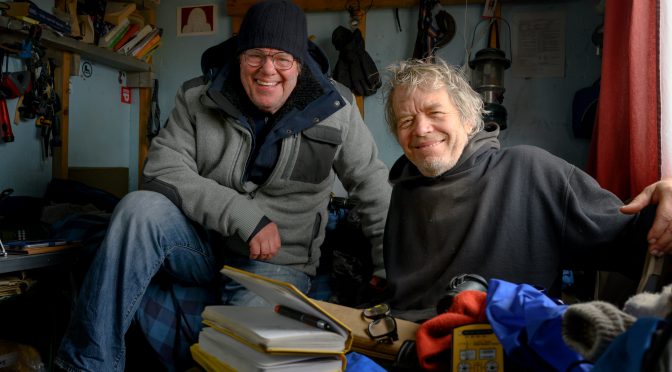
A visit from a long-term friend of Cooper Island
By George Divoky Cooper Island has provided me with a place to conduct a long-term study of an Arctic seabird and also a place where I have been fortunate to establish some long-term friendships. In June 2001, photographer Joe McNally visited the island to obtain images to accompany the New York Times story Darcy Frey was writing about the Cooper Island research. Joe’s week on the island in 2001 started with him being sick in his tent for the first two days but, after he and I had spent a week walking through the guillemot colony and chatting back at camp, ended...
